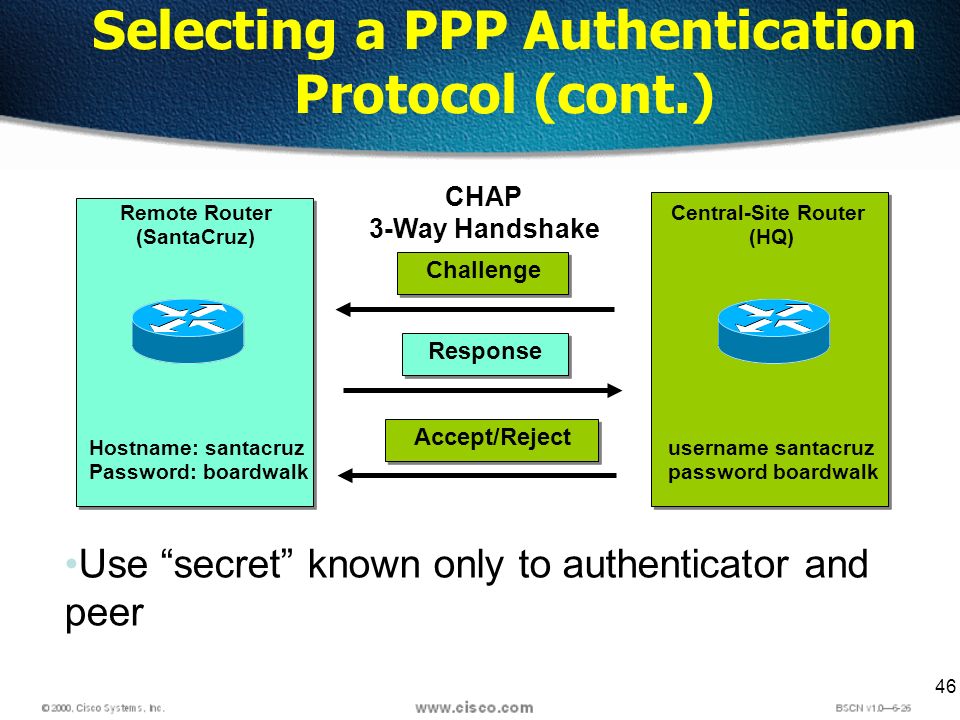Challenge-Handshake Authentication Protocol
In computing, the Challenge-Handshake Authentication Protocol (CHAP) authenticates a user or network host to an authenticating entity. That entity may be, for example, an Internet service provider. CHAP is specified in RFC 1994.
CHAP provides protection against replay attacks by the peer through the use of an incrementally changing identifier and of a variable challenge-value. CHAP requires that both the client and server know the plaintext of the secret, although it is never sent over the network. Thus, CHAP provides better security as compared to Password Authentication Protocol (PAP) which is vulnerable for both these reasons. The MS-CHAP variant does not require either peer to know the plaintext and does not transmit it, but has been broken.
Working cycle
CHAP is an authentication scheme used by Point to Point Protocol (PPP) servers to validate the identity of remote clients. CHAP periodically verifies the identity of the client by using a three-way handshake. This happens at the time of establishing the initial link (LCP), and may happen again at any time afterwards. The verification is based on a shared secret (such as the client user's password).
- After the completion of the link establishment phase, the authenticator sends a "challenge" message to the peer.
- The peer responds with a value calculated using a one-way hash function on the challenge and the secret combined.
- The authenticator checks the response against its own calculation of the expected hash value. If the values matches, the authenticator acknowledges the authentication; otherwise it should terminate the connection.
- At random intervals the authenticator sends a new challenge to the peer and repeats steps 1 through 3.
CHAP packets
| Description | 1 byte | 1 byte | 2 bytes | 1 byte | Variable | variable |
|---|---|---|---|---|---|---|
| Challenge | Code = 1 | ID | Length | Challenge Length | Challenge value | Name |
| Response | Code = 2 | ID | Length | Response Length | Response value | Name |
| Success | Code = 3 | ID | Length | Message | ||
| Failure | Code = 4 | ID | Length | Message |
The ID chosen for the random challenge is also used in the corresponding response, success, and failure packets. A new challenge with a new ID must be different from the last challenge with another ID. If the success or failure is lost, the same response can be sent again, and it triggers the same success or failure indication. For MD5 as hash the response value is MD5(ID||secret||challenge), the MD5 for the concatenation of ID, secret, and challenge.

